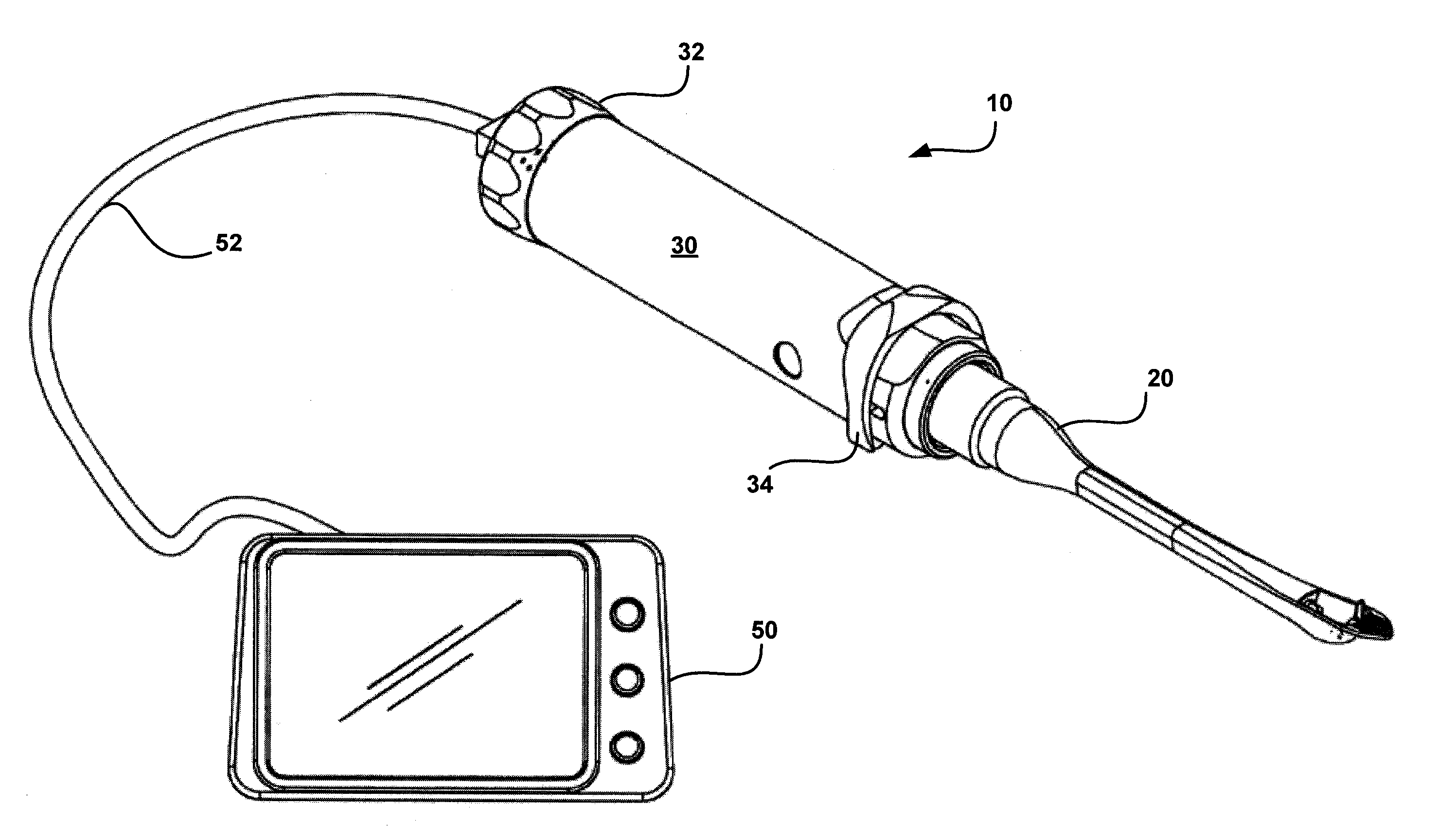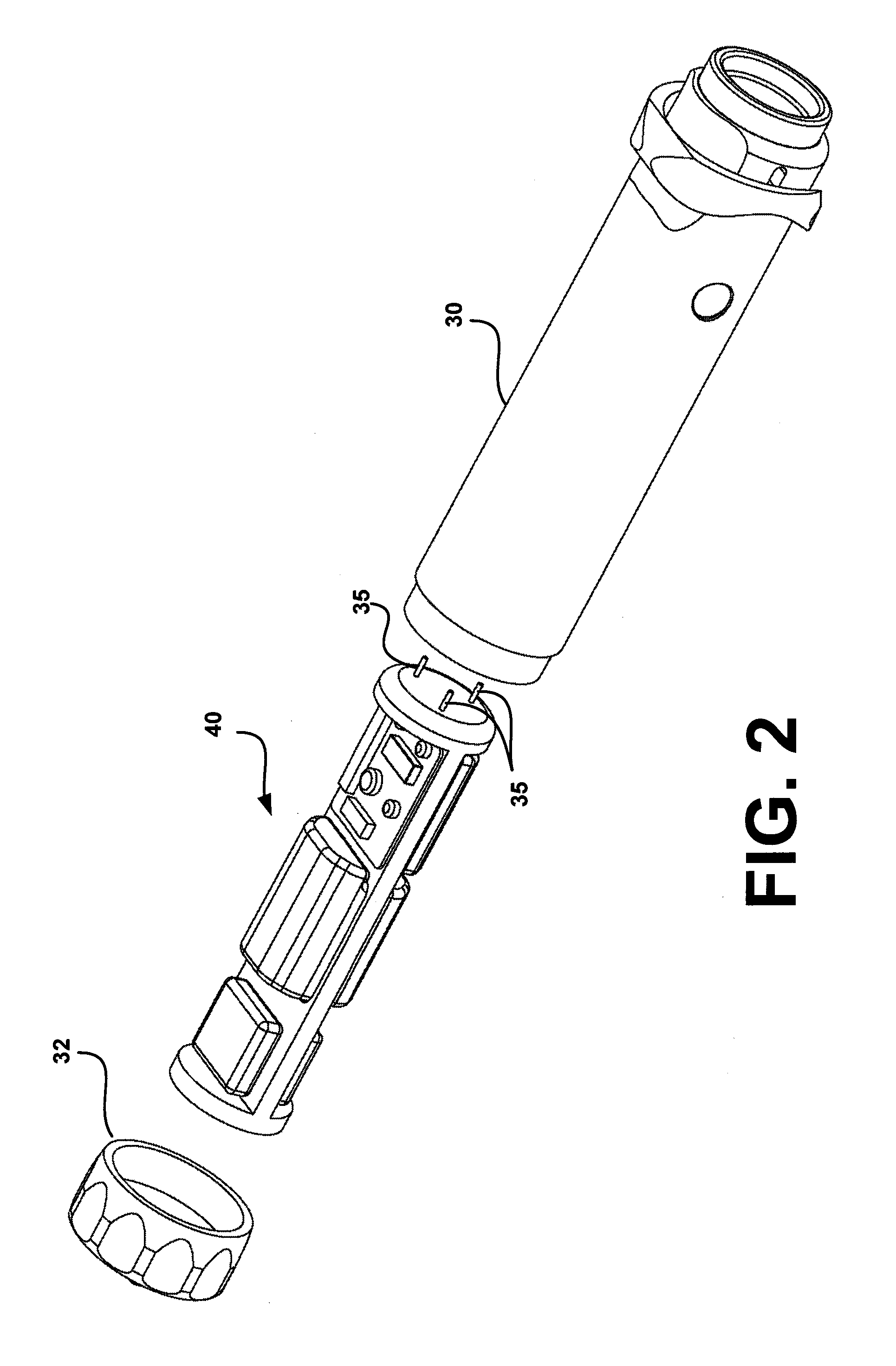Endo-surgical device and method
a surgical device and endoscope technology, applied in the field of endoscopes, can solve the problems of insufficient inhibition of nerves, tendons and other tissue, pain and morbidity lasting up to six months, visualization/cutting cannulas used,
- Summary
- Abstract
- Description
- Claims
- Application Information
AI Technical Summary
Benefits of technology
Problems solved by technology
Method used
Image
Examples
Embodiment Construction
[0081]Referring now to FIGS. 1-4D, there is shown a surgical system 10 for minimally invasive, minimally encumbered endo-surgery in accordance with particular embodiments of the instant invention. As will be discussed more particularly below, the endo-surgical system 10 includes a cannula 20, a handle or handpiece 30, an electronics module (EM) 40 and a display 50.
[0082]The cannula 20 of system 10 includes a straight, angled or curved, rigid shaft that is designed for a specific surgical, therapeutic and / or diagnostic purpose. In some embodiments, the cannula 20 can be disposable and, in others, it may be sterilized for reuse. In the present system, the cannulas are designed to be procedure-specific (i.e., each is individually designed for a specific visualization and / or surgical procedure). For example, in one particular embodiment for the endoscopic carpal tunnel release procedure, a cannula 20 is provided that has a curved (or angled) distal end that protrudes from its main body....
PUM
 Login to View More
Login to View More Abstract
Description
Claims
Application Information
 Login to View More
Login to View More - R&D
- Intellectual Property
- Life Sciences
- Materials
- Tech Scout
- Unparalleled Data Quality
- Higher Quality Content
- 60% Fewer Hallucinations
Browse by: Latest US Patents, China's latest patents, Technical Efficacy Thesaurus, Application Domain, Technology Topic, Popular Technical Reports.
© 2025 PatSnap. All rights reserved.Legal|Privacy policy|Modern Slavery Act Transparency Statement|Sitemap|About US| Contact US: help@patsnap.com



